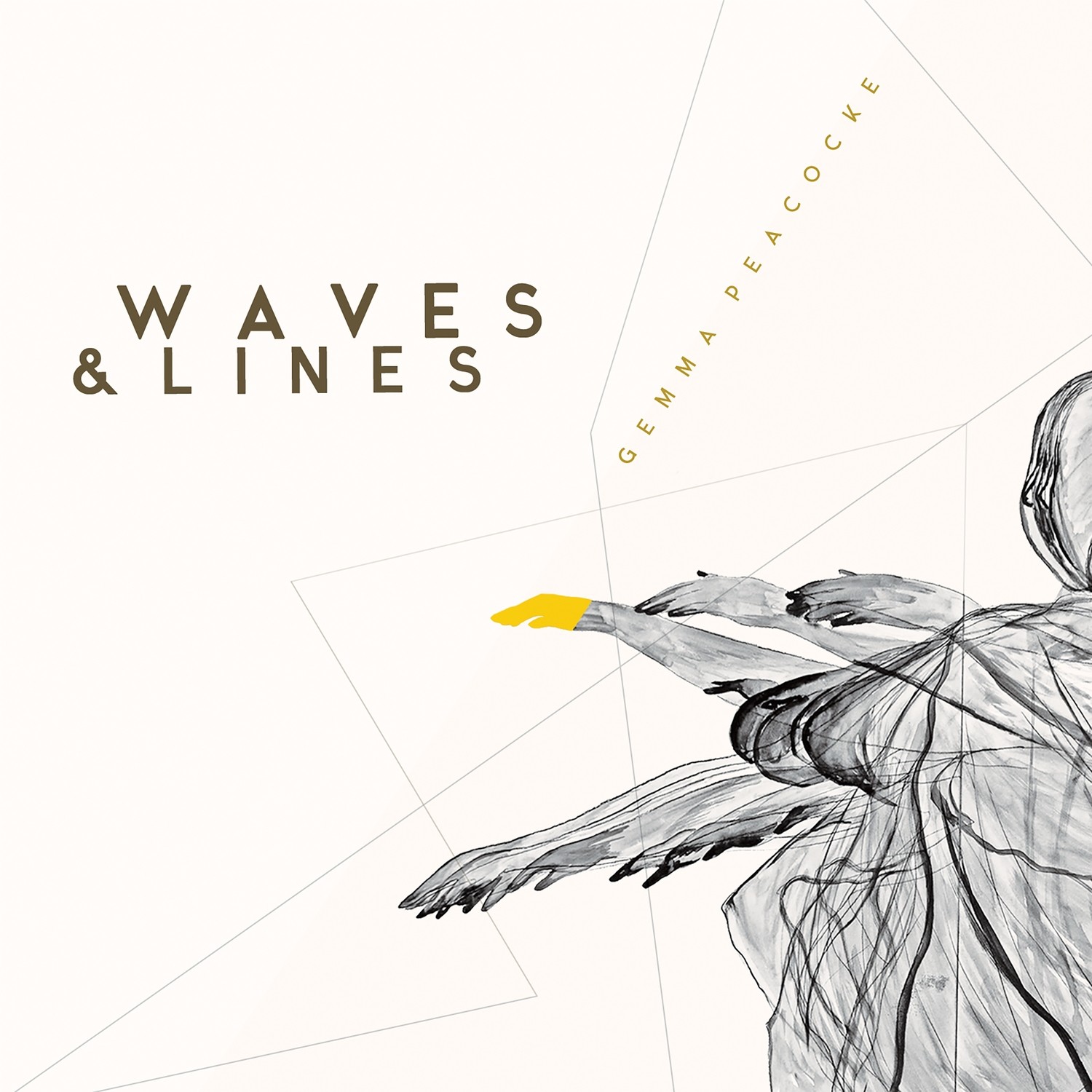Waves & Lines (sheet music)
Waves & Lines for soprano, piano, percussion, double bass, and electronics (50')
2015-2017
Waves & Lines is a 50-minute multimedia song cycle for soprano, electronics and chamber ensemble. The album is based on a collection of Afghan women’s folk poems called landays. These poems are passed down secretly as a sung oral tradition and were collected and translated by Eliza Griswold in the book I Am the Beggar of the World: Landays from contemporary Afghanistan.
- Bees
- Love
- Father
- Ice cream
- War
- I Am the Beggar of the World
- Separation
- London
Technical Information
Amplification
You will need:
- Microphones, a mixing desk and speakers to amplify the performers in order to balance the electronics with the live audio.
- An Apple laptop loaded with QLab and a small table for the laptop.
- Two MIDI foot pedals or MIDI-capable electronic drum pads. Set-up:
- Connect MIDI controllers to the laptop to trigger cues in QLab.
- Connect the audio from the laptop to the mixing desk.
- Connect the instrument and vocal microphones to the mixing desk.
- Send live and fixed audio to speakers.
Projections
You will need:
- A second Apple laptop loaded with QLab for back of house.
- QLab file with projections.
- A QLab video license. Projections are triggered by a back-of-house technician. There is one dynamic projection file per song. Electronic tape part
- The tape part is triggered by the percussionist with a foot pedal or MIDI drum pad – except for "War" where the bassist triggers the electronics
- Trigger points are marked with a triangular play symbol (u)
Performance notes
Voice
- The song cycle has a wide range: from F below the staff up to B above the staff
- Use light, non-operatic vibrato leaning towards a pop/jazz/folk tone Piano
- There is some playing inside the piano with hands (harmonics) and a part that is played with a superball/friction mallet. Percussion
- Bullroarer
- Vibraphone
- Glockenspiel
- Drum set
- Triangle
- Tambourine
- Low wood block
- Shaker
- 2x MIDI foot pedals or MIDI drum pads
- Double bass with C-extension and D-gate
- Double bassist triggers the tape part with a foot pedal or MIDI drum pad in "War"
- The end of “Bees” requires the use of a superball/friction mallet
Song Notes
1. BEES Percussion
Purerehua (bullroarer), Drum set, Superball/friction mallet
Double bass
Superball/friction mallet
2. LOVE Percussion
Vibraphone, bow
- Use one bow-stroke for each new bowed note. Piano
- Strike the key notated in the left hand and touch the corresponding string at the third partial to sound the note two octaves above (notated in the right hand). Feel free to substitute different notes and fingerings to get the same pitch. 3. FATHER Soprano
- Apostrophe (’) indicates a sharp, non-decaying release of the note.
- Vocal fry indicates a breaking up of the note using the fry register. Percussion Glockenspiel, Drum set, Woodblock, Shaker, MIDI foot pedal
- Use long, slow bow strokes on cymbal. Use a new bow stroke when necessary. Piano
- The diamond noteheads starting at bar 25 indicate to use a superball mallet, dragging the mallet- head lengthwise down the string from the rib of the piano to the front along the lowest strings on the piano to produce an effect like a whale cry. Double bass
• X-note heads are used for the percussive effect achieved by placing the bow screw vertically between the A and D strings behind the bridge and striking the strings.
4. ICE CREAM Soprano
• Duration of glissandi begins at the start of the first note and ends at the start of the second note.
Percussion
Vibraphone (played with mallets and bow), Drum set (played with sticks), two MIDI foot pedals (one for vibraphone and one for drum set)
• Set the vibraphone motor to slow
Double bass
• Duration of glissandi begins at the start of the first note and ends at the start of the second note.
5. WAR
Soprano
- X-noteheads are used for glottal growl
- Begin glissando at the start of the first note and end it at the start of the second note. Percussion Vibraphone (played with mallets and bow), Drum set (played with sticks)
- Box notation is used for randomly-ordered notes.
- Let bowed notes on vibraphone ring for full decay Piano
- Box notation is used for randomly-ordered notes. Double bass
- Use C-extension (preferably with D-gate)
- Begin glissando at the start of the first note and end it at the start of the second note. I AM THE BEGGAR OF THE WORLD Soprano
• X noteheads indicate pitchless effects.
Percussion
- Crash cymbal played with sticks and a superball mallet
- Snare drum played with sticks and brushes 7. SEPARATION Soprano
• Begin glissandi at the start of the first note and end at the start of the second note. Double bass
• Let all pizzicato notes ring on.
8. LONDON
Percussion
Vibraphone, Drum set (played with sticks), two MIDI controllers: one for vibraphone and one for drum set • Half-pedal vibraphone so that notes ring but do not become muddy.
Double bass
• Let pizzicato should ring
